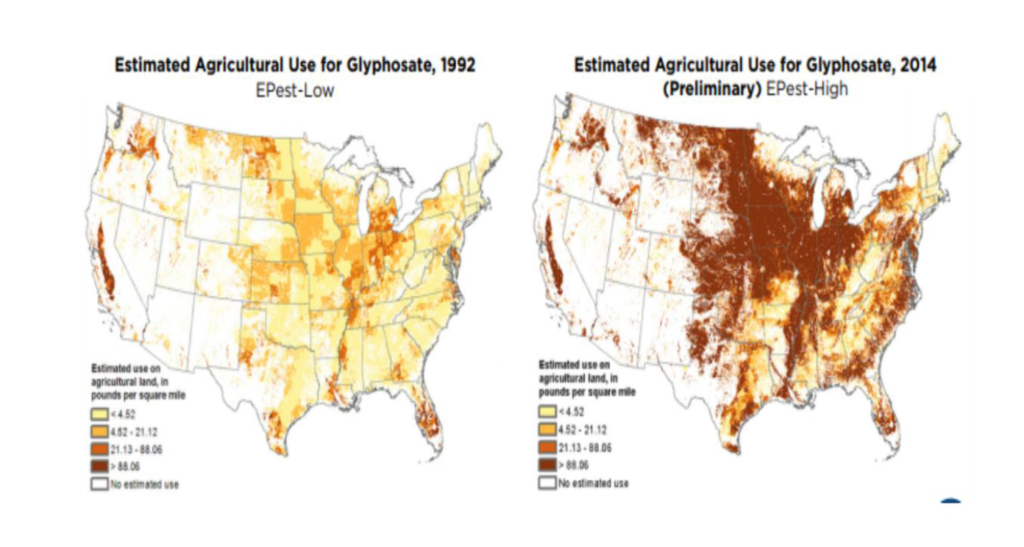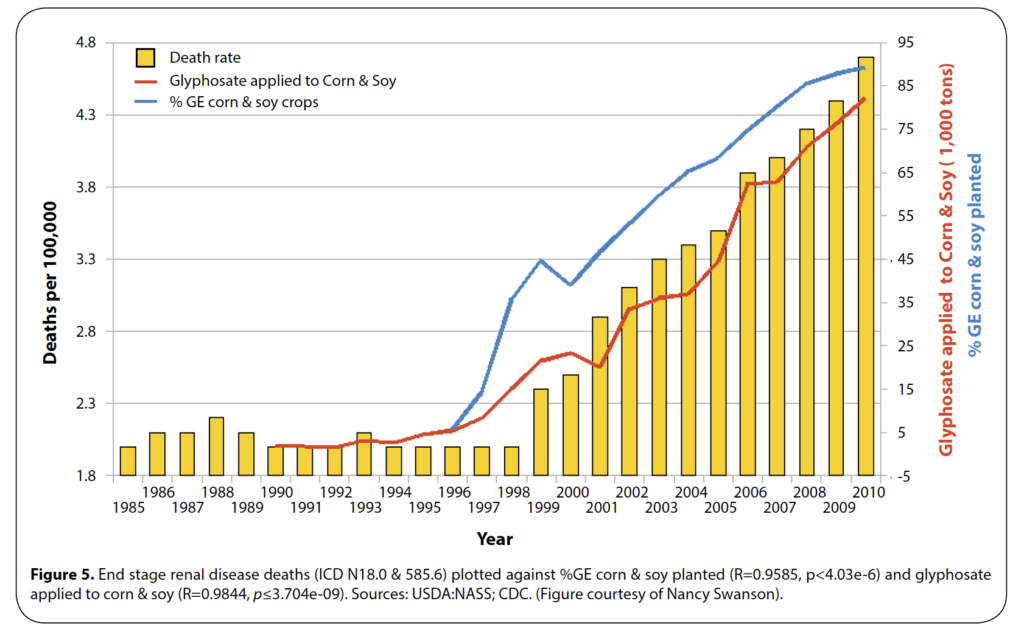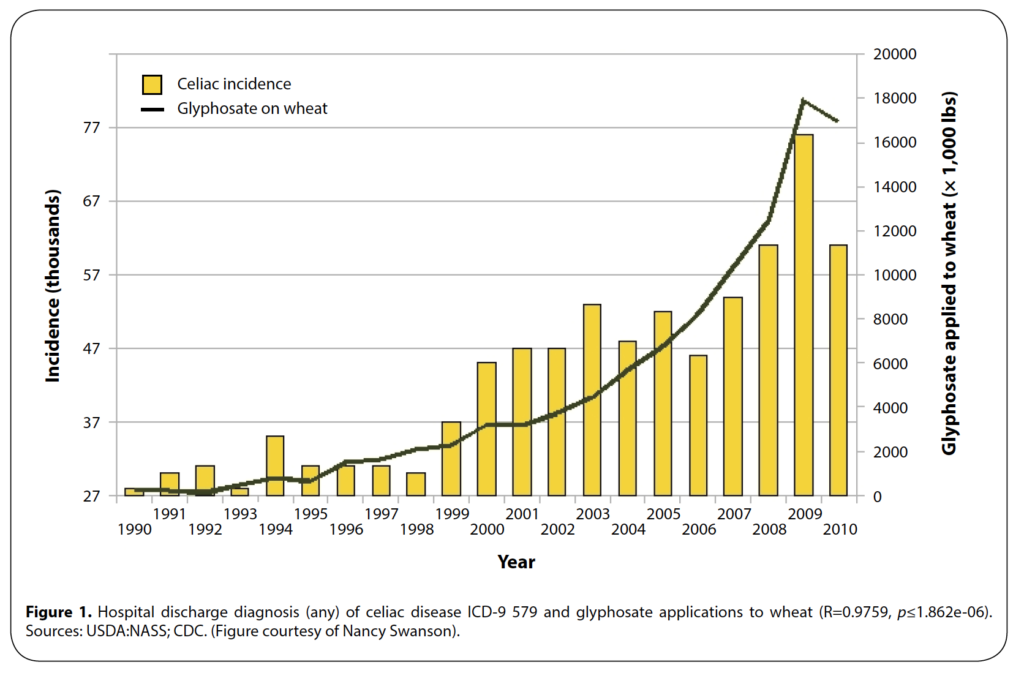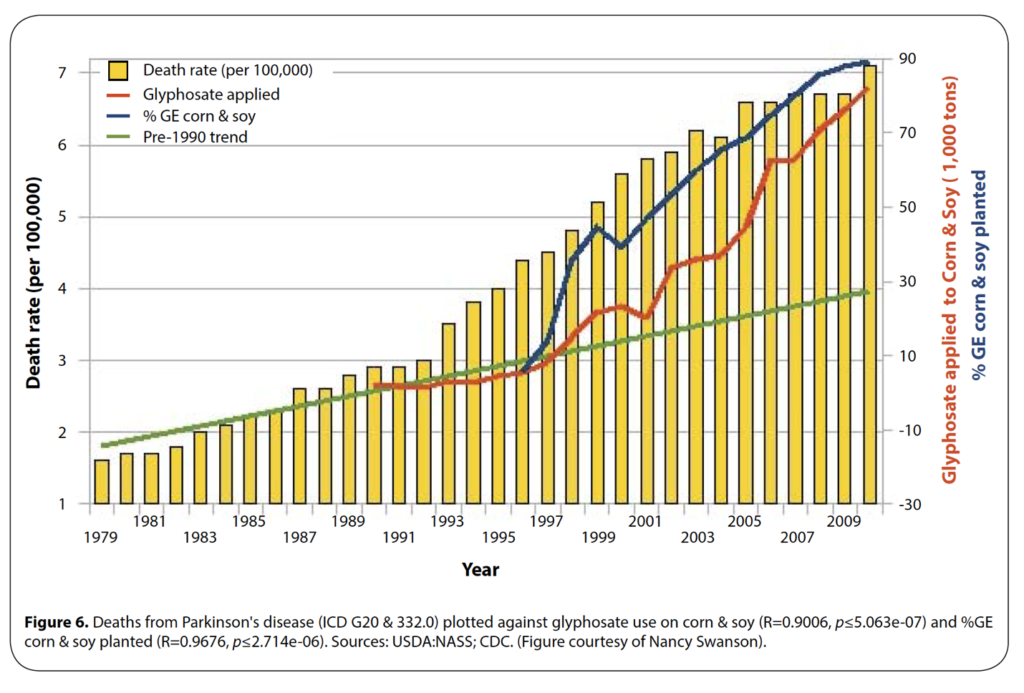‘There is nothing more deceptive than an obvious fact.’
~Sherlock Holmes
Over the past 30 years, gluten has become the number one villain among foods. At one time, an allergy to gluten was rarely seen. Today, almost 3 million people in the United States have celiac disease, a serious immune reaction to the protein in wheat, barley, and rye. Another 18 million people are thought to suffer from non-celiac gluten sensitivity, which causes symptoms similar to celiac disease (including diarrhea, fatigue, and nausea) but does not damage the lining of the small intestine.
I believe there are many contributing factors to the epidemic of gluten allergy and intolerance. For one thing, most of the grain we consume is highly refined; stripped of nutrients, phytonutrients, and fiber. Highly processed flour is so devoid of nutrients that the government requires companies to add synthetic nutrients (a handful of B-vitamins and iron) to breads, cereals, and flour. The lack of fiber in processed foods also means that fiber supplements have to be taken separately.
Most of the flour we consume is bleached and rancid, because it sits on shelves in stores and at home for months, or even years, before we use it. To add insult to injury, commercial baked goods generally use refined sugars and fats, and some pastries are fried in highly toxic vegetable oils.
Toxic Farming Practices Create Unhealthy Grains
The problems with grains actually begin with farming practices. Most grains are grown in nutrient poor soil and are subjected to numerous pesticides and herbicides. This, obviously, adversely affects the nutrient profile. Wheat, for example, should be a good source of selenoproteins. But selenium content in wheat ranges from sufficient to very low, depending upon soil conditions. Soil compaction, which results from the modern practice of “no till” agriculture leads to both reduced selenium and a significant increase in arsenic in wheat.1
Of all factors contributing to the epidemic of celiac disease and gluten intolerance, I believe the most significant is glyphosate, the active ingredient in the herbicide Roundup®. Glyphosate is by far the most-used herbicide in the United States today. Since the late 1970s, the volume of glyphosate-based herbicides (GBHs) applied has increased approximately 100-fold.
The use of glyphosate on corn and soy crops has risen steadily in the US following the rise in the adoption of Roundup® -Ready seeds, first introduced in the mid 1990s, as well as the increasingly popular practice of desiccation with Roundup right before the harvest for crops such as sugar cane, grains (especially wheat) and legumes. The practice of “ripening” sugar cane with glyphosate may explain the recent surge in kidney failure among agricultural workers in Central America.2
Among pesticides, GBHs, such as Roundup, are the most frequently used worldwide, and their residues are common contaminants of ground and surface water and in food and feed.3,4 Glyphosate is all around us, in our food supplies and now within us, wreaking havoc—but because the effects are slow and cumulative, they have gone mostly unnoticed.
Unfortunately, many people have stopped eating whole grains even if they do not suffer from celiac disease or gluten intolerance because of misinformation. Whole grains contain a wealth of health-promoting compounds that are highly bioavailable, and eliminating them from our diets is a bad idea. Even people with celiac disease can safely consume non-gluten whole grains such as corn, oats, and quinoa. Not only are whole grains rich sources of phytonutrients and fiber, they are the most economical and environmental friendly of all food groups.

Glyphosate and Celiac Symptoms
All of the features of celiac disease can be explained by glyphosate’s known properties. These include (1) disrupting the shikimate pathway, 2) altering the balance between pathogens and beneficial biota in the gut, (3) chelating transition metals, as well as sulfur and selenium, and (4) inhibiting cytochrome P450 enzymes.
Characteristics of celiac disease point to impairment in many cytochrome P450 enzymes, which are involved with detoxifying environmental toxins, activating vitamin D3, catabolizing vitamin A, and maintaining bile acid production and sulfate supplies to the gut. Glyphosate is known to inhibit cytochrome P450 enzymes.5
Recent scientific studies on glyphosate have confirmed the following health related conditions and diseases:
- Kidney disease/failure. An analysis of data from the FDA’s drug Adverse Event Reporting System indicates that glyphosate contamination in both food and drugs may be a major contributor to chronic and acute kidney failure.6
- Pancreatitis. Glyphosate-induced pancreatitis results in the release of trypsin, causing a leaky vasculature.7
- Adrenal Insufficiency. 8
- Obesity. According to a recent paper, glyphosate may be a key contributor to the obesity epidemic and the autism epidemic in the United States.9
- Digestive problems. Fish exposed to glyphosate develop digestive problems similar to celiac disease, including impaired gall bladder function, fatty liver, and pancreatitis. Celiac disease is associated with imbalances in gut bacteria that can be fully explained by the known effects of glyphosate on gut bacteria.10-12
- Antibiotic resistance. Glyphosate and antibiotic resistance have arisen in fungi and bacteria in parallel. Glyphosate may serve as one of the drivers for antibiotic resistance.13
- Cancer. In 2015, the World Health Organization reclassified glyphosate as probably carcinogenic to humans, citing scientific literature on glyphosate and its breakdown product aminomethyl phosphonic acid (AMPA) in soil and water, their toxicity to macro- and microorganisms, their effects on microbial compositions, and potential indirect effects on plant, animal and human health.14
- Endocrine-disrupting effects, including infertility.15,16
- Neurodegenerative diseases. Glyphosate has been found to adversely impact the structure and function of important proteins and to increase the risk of neurodegenerative diseases such as Parkinson’s disease.17

Glyphosate GMOs and Gluten Intolerance
Chronic low doses of glyphosate have been shown to contribute to numerous health problems for animals and humans. Using evidence from animal feeding and case studies, I believe GMOs are another significant factor in gluten sensitivity reactions—and this is because Roundup is sprayed on GMOs. I am not saying that people aren’t reacting to gluten, but rather that it is glyphosate that is causing leaky gut and altering the gut microbiome in ways that at the very least exacerbates symptoms, or contributes to the conditions that lead to gluten sensitivity.
Simply put, consuming GMO gluten-rich wheat increases intestinal permeability, making the gut more porous, which in turns allows gluten and other substances to make direct contact with the immune system. This leads to chronic inflammation and the symptoms of gluten intolerance. The protein class in wheat known as alpha-gliadin provokes the release of zonulin, which can promote intestinal permeability to unhealthy levels. Zonulin can be measured in the blood and is believed to be a biomarker associated with leaky gut.18

A key system-wide pathology in celiac disease is impaired sulfate supply to the tissues, and this is also a key component of glyphosate’s toxicity to humans. Again, this is why it is more than plausible that the recent sharp increase in gluten intolerance and related conditions and diseases is a result of glyphosate more than just gluten intake.
Over time, glyphosate slowly damages the gut flora, leading to chronic diseases rooted in gut dysfunction, which in turn can increase the risk of allergies and inflammatory autoimmune diseases. The important gut bacterium Lactobacillus is negatively impacted by glyphosate and its depletion in association with celiac disease.19 Adequate Lactobacillus in the gut is essential for converting selenium into more bioavailable active organic forms like selenocysteine and selenomethionine.20
Interestingly, both Lactobacilli and Bifidobacteria are capable of modifying gluten tomake it less allergenic. Probiotic treatment with Bifidobacteria has been shown to alleviate symptoms associated with celiac disease by suppressing the pro-inflammatory milieu triggered by the microbiota of celiac patients.21,22
Confusing the Body: Glyphosate Versus Glycine
Glycine, the smallest amino acid commonly found in proteins, has unique properties that support flexibility and the ability to anchor to the plasma membrane or the cytoskeleton. When glyphosate behaves as an amino acid analogue of glycine, it can be incorporated into polypeptide chains during protein synthesis, which in turn affects the structure and function of important proteins in the human body.23
When the human body substitutes glyphosate for glycine, it leads to a host of serious illnesses including diabetes, obesity, asthma, kidney disease, Alzheimer’s disease, amyotrophic lateral sclerosis (ALS) and Parkinson’s disease (PD), among other conditions.

Glyphosate is Not the Only Problem
It is important to note that glyphosate is not a soloist—it is never used alone, but always with its co-formulants, which may contribute much of the toxicity. Until recently, the endocrine-disrupting effects of pesticides have been studied based primarily on tests on their declared active ingredient.
Commercial GBHs consist of the declared active ingredient (glyphosate salts) and a number of formulants such as ethoxylated formulants (4130®, 3780®, and A-178®). These added co-formulants, generally classified as inerts and kept confidential, act as endocrine-disrupting chemicals at levels up to several hundred times below the level at which the declared active ingredient demonstrates the same activity. Recent research studies have demonstrated that the toxic effect of GBH is related to the added use of formulants.24
Cancer and Glyphosate
Since glyphosate was introduced in 1974, all regulatory assessments have established that glyphosate has low hazard potential to mammals. However, in March 2015, the International Agency for Research on Cancer (IARC) concluded that it is probably carcinogenic.25
In recent studies reviewing the association between glyphosate toxicity and carcinogenicity, researchers concluded that the levels of glyphosate exposure were under the reference values based on human bio-monitoring and food residues monitoring.26, 27
I find it alarming that the results of several studies clearly demonstrate that lower levels of agricultural glyphosate herbicide formulations, at concentrations well below officially set safety limits, induce severe hormone-dependent mammary, hepatic and kidney disturbances.28-31
Glyphosate has been found to exert proliferative effects in human hormone-dependent breast cancer. Furthermore, glyphosate also alters both ERα and β expression and possesses estrogenic activity at low and environmentally relevant concentrations.32 Glyphosate acts not only as an endocrine disrupting estrogen-like compound but it also impairs liver function and hepatic detoxification.33
Glyphosate has also been implicated in non-Hodgkin’s lymphoma. A dose-response relationship for non-Hodgkin’s lymphoma was demonstrated in a cross-Canada study of occupational exposure to glyphosate in men, and a larger study in the U.S. noted a similar result.34-36 And, in Sweden, a population-based study showed an increased risk for non-Hodgkin’s lymphoma upon prior exposure to herbicides and fungicides but not insecticides.37
Glyphosate: The Facts, Simplified
(1) GBHs are the most heavily applied herbicide in the world and usage continues to rise.
(2) Worldwide, GBHs often contaminate drinking water sources, precipitation, and air, especially in agricultural regions.
(3) The half-life of glyphosate in water and soil is longer than previously recognized.
(4) Glyphosate and its metabolites are widely present in the global soybean supply.
(5) Human exposures to GBHs are rising.
(6) Glyphosate is now authoritatively classified as a probable human carcinogen.
(7) Regulatory estimates of tolerable daily intakes for glyphosate in the United States and European Union are based on outdated science.38
Protect Yourself with Natural Compounds
Obviously, I advise avoiding GMO foods as well as non-organic food treated with glyphosates. But because glyphosate is so ubiquitous in our food and water supply, it’s important to protect yourself with additional support.
Natural compounds that have demonstrated significant protection or detoxification from glyphosate toxicity include resveratrol, which prevents oxidative stress caused by glyphosate. In laboratory studies, resveratrol has been shown to inhibit lipid peroxidation, enhance the antioxidant defense system, and decrease damage in the brain, heart, liver and renal tissues.39
In other research, Ginkgo biloba extract has been shown to be a potent protector against glyphosate-induced toxicity.40 Additional natural compounds that I recommend include isothiocyanates (ITCs), glycine, and N-acetylcysteine (NAC). Liver supportive herbal extracts such as schisandra, andrographis, milk thistle (silymarin), and Baikal skullcap (Scutellaria baicalensis) along with phenol-rich compounds such as pomegranate seed extract and grape seed extract provide broad-spectrum protection and detoxification from glyphosate and other related formulants.
The Benefits of Glycine Supplementation
As I mentioned earlier, the similarity between glyphosate and glycine allows glyphosate to take glycine’s place in peptides and proteins if it is not present in sufficient amounts, which causes a myriad of health problems. I advise supplementing with glycine for two reasons: if glycine is provided, it will be preferentially used instead of glyphosphate by the body. At the same time, aging peptides/proteins containing glyphosate are flushed from the body.
Glycine exhibits numerous protective effects, including:
- Antiinflammatory, immunomodulatory and direct cytoprotective actions.
- Protection against liver and renal injury caused by hepatic and renal toxicants and drugs.
- Acts on inflammatory cells such as macrophages to suppress activation of transcription factors and the formation of free radicals and inflammatory cytokines.
- In the plasma membrane, glycine appears to activate a chloride channel that stabilizes or hyperpolarizes the plasma membrane potential.
- Protects against peptidoglycan polysaccharide-induced arthritis.
- Inhibits gastric secretion and protects the gastric mucosa against chemically and stress-induced ulcers. 41, 42
Interesting research indicates that supplementing with glycine significantly prolongs C. elegans (Caenorhabditis elegans) lifespan. This simple invertebrate is often used to study fundamental cellular and molecular processes. In research, supplementation with glycine has been shown to
ameliorate specific transcriptional changes that are associated with aging.43
Glycine is found in many chelated compounds such as Creatine MagnaPower, magnesium glycinate, and magnesium glycyl glutamine, but I prefer it in the powder form mixed with other compounds for relaxation as well as detoxification.
Supporting Glutathione, the Body’s Natural Powerful Antioxidant
Glutathione is a major redox/antioxidant, cell protectant, and detoxifying agent made by the body that plays a critical role in the liver’s detoxification processes. Glutathione is comprised of three amino acids: glycine, L-glutamine, and L-cysteine. Glycine and N-acetyl cysteine (NAC) supplements stimulate glutathione production, which improves the ability to detoxify toxic substances, including glyphosate.
In studies, NAC has shown antioxidant and cytoprotective effects against sub-chronic oral glyphosate-based herbicide-induced oxidative stress in animals.44 Along with supplemental glycine and N-acetyl cysteine, I recommend supplementing with natural compounds that spare the degradation of glutathione, such as isothiocyanates, phenolic compounds, and organic forms of selenium.
The Protective Effects of Isothiocyanates (ITCs)
Isothiocyanates (ITCs) are natural compounds with a wide range of biological activities and health benefits. The most intensively studied ITCs include sulforaphane (SFN) and phenethyl isothiocyanate (PEITC), which are isothiocyanates found in large amounts in cruciferous vegetables. SFN is found in broccoli and PEITC in cabbage; sprouts of these vegetables are the richest source. Two other important ITCs are 6-(methylsulfinyl) hexyl isothiocyanate (6-MSITC), found in wasabi and horseradish, and allyl isothiocyanate, found in garlic.
Sulforaphane (SFN) protects against environmentally induced diseases and chronic diseases such as cancer and neurological diseases, including ischemic/traumatic brain injury, Alzheimer’s disease, and Parkinson’s disease. These diseases share common characteristics such as oxidative stress, misfolded proteins, excitotoxicity, inflammation, and neuronal loss. SFN has been shown to normalize DNA methylation, a crucial part of normal cell function that allows cells to ‘remember who they are and where they have been.’ It’s also important for regulating gene expression, and this compound has been found to play a role in activating more than 200 different genes. SFN and other ITCs beneficial effects can be mainly ascribed to its peculiar ability to activate the Nrf2 (nuclear factor erythroid 2-related factor 2)/ARE pathway.45-50
When compared with other phytochemicals widely used in dietary supplements, oral SFN is significantly more bioavailable than other supplements and also significantly more able to induce NQO1 (NAD(P)H dehydrogenase [quinone] 1), a Phase II enzyme essential in the metabolism of a number of exogenous toxins, oxidized nutrients, and endogenous metabolites.51
ITCs demonstrate a wide range of biological activities and health benefits in humans, and show promise as a chemopreventive agent against not only a variety of cancers such as breast, prostate, colon, skin, lung, stomach, and bladder cancer, but also against cardiovascular and neurodegenerative diseases and diabetes.52
My Recommendations
On a global level, I strongly believe that nations around the world must reexamine their policy towards glyphosate and introduce legislation banning the use of this dangerous chemical and the co-formulants that contribute to its toxic effects. At the very least, glyphosate use should be restricted. In addition, all foods containing genetically modified organisms (GMOs) should be labeled because GMO foods are treated with glyphosates.
On a personal level, I recommend that you do your best to avoid GMOs in all foods and drugs. At the same time, focus on digestive healing using botanical and nutritional medicine. For suggestions on healing the gut, read my blog entitled “Botanical and Nutritional Solutions for GERD, Indigestion, and Digestive Tract Health” (https://www.donnieyance.com/botanical-and-nutritional-solutions-for-gerd-indigestion-and-digestive-tract-health/) and be sure to include in your daily protocol a comprehensive adaptogenic formulation to support your overall health.
References:
- Livingston M, Fernandez-Cornejo J, Unger J, Osteen C, Schimmelpfennig D, Park T, and Lambert D. (2015) The Economics of Glyphosate Resistance Management in Corn and Soybean Production. U.S. Department of Agriculture, Economic Research Service, April 2015, No. ERR-184.
- Samsel A, Seneff S. Glyphosate, pathways to modern diseases II: Celiac sprue and gluten intolerance, Interdiscip Toxicol. 2013; Vol. 6(4): 159–184.
- ANSES. Evaluation of the Risks of Pesticide Residues in Water Distribution. Available online: http://www.observatoire-pesticides.fr/upload/bibliotheque/230206191572191620118401138686/ORP-Ra- PesticidesEau.pdf (accessed on 17 February 2016).
- Székács A, Darvas B. Forty years with glyphosate. In Herbicides—Properties, Synthesis and Control of Weeds; Hasaneen, M.N., Ed.; Elsevier: Burlington, MA, USA, 2012.
- Seneff1 S, Swanson N, Chen L, Koenig G. Death as a Drug Side Effect in FAERS: Is Glyphosate Contamination a Factor? Agricultural Sciences, 2015, 6, 1472-1501 Published Online December 2015 in SciRes. http://www.scirp.org/journal/as, http://dx.doi.org/10.4236/as.2015.612143
- Schloss B, Gulati P, Yu L, Abdel-Rasoul M, O’Brien W, Von Visger J, and Awad H. (2011) Impact of Aprotinin and Renal Function on Mortality: A Retrospective Single Center Analysis. Journal of Cardiothoracic Surgery, 6, 103. http://dx.doi.org/10.1186/1749-8090-6-103.
- De Waele, J, Hoste E, Decruyenaere J, Colardyn F. (2003) Adrenal Insufficiency in Severe Acute Pancreatitis. Pancreas, 27, 244-246. http://dx.doi.org/10.1097/00006676-200310000-00009.
- Ibid.
- Samsel A, Seneff S. (2013). Glyphosate’s suppression of cytochrome P450 enzymes and amino acid biosynthesis by the gut microbiome: Pathways to modern diseases. Entropy 15: 1416–1463.
- Van Bruggen A, He M, Shin, K, Mai V, Jeong K, Finckh M, Morris J. Environmental and health effects of the herbicide glyphosate, Science of The Total Environment, Volumes 616–617, March 2018, Pages 255-268.
- Fasano, A. (2011). Zonulin and its regulation of intestinal barrier function: the biological door to inflammation, autoimmunity, and cancer. Physiological reviews, 91(1), 151-175.
- Di Cagno R, De Angelis M, De Pasquale I, Ndagijimana M, Vernocchi P, Ricciuti P, Gagliardi F, Laghi L, Crecchio C, Guerzoni ME, Gobbetti M, Francavilla R. (2011). Duodenal and faecal microbiota of celiac children: Molecular, phenotype and metabolome characterization. BMC Microbiol 11: 219.
- Van Bruggen A. Environmental and health effects of the herbicide glyphosate.
- Ibid.
- Defarge N, Takács E, Lozano V, Mesnage R, Spiroux de Vendômois J, Séralini G, Székács A. Co-Formulants in Glyphosate-Based Herbicides Disrupt Aromatase Activity in Human Cells below Toxic Levels, Int. J. Environ. Res. Public Health 2016, 13, 264; doi:10.3390/ijerph13030264.
- Brix A, Nyska A, Haseman J, Sells D, Jokinen M, Walker N. 2005. Incidences of selected lesions in control female Harlan Sprague-Dawley rats from two-year studies performed by the National Toxicology Program. Toxicol. Pathol. 33, 477–483.
- Baizabal-Carvallo JF, Jankovic J. (2012). Movement disorders in autoimmune diseases. Mov Disord 27(8): 935–46.
- Fasano A. Zonulin and its regulation of intestinal barrier function.
- Di Cagno R. Duodenal and faecal microbiota of celiac children.
- Pessione E. (2012). Lactic acid bacteria contribution to gut microbiota complexity: Lights and shadows. Front Cell Infect Microbiol 2: 86.
- Smecuol E, Hwang HJ, Sugai E, Corso L, Cheravsky AC, Bellavite FP, González A, Vodánovich F, Moreno ML, Vázquez H, Lozano G, Niveloni S, Mazure R, Meddings J, Maurio E, Bai JC. (2013). Exploratory, randomized, double blind, placebo-controlled study on the eff ects of Bifi dobacterium infantis natren life start strain super strain in active celiac disease. J Clin Gastroenterol 47(2): 139–47.
- Medina M, De Palma G, Ribes-Koninckx C, Calabuig M, Sanz Y. (2008). Bifi dobacterium strains suppress in vitro the pro-inflammatory milieu triggered by the large intestinal microbiota of coeliac patients. J Infl amm (Lond) 5: 19.
- Van Bruggen A,He M, Shin K, Mai V, Jeong K, Finckh M, Morris J. Environmental and health effects of the herbicide glyphosate, Science of The Total Environment, Volumes 616–617, March 2018, Pages 255-268.
- Ibid.
- Tarazona J, Court-Marques D, Tiramani M, Reich H, Pfeil R, Istace F, Crivellente F. Glyphosate toxicity and carcinogenicity: a review of the scientific basis of the European Union assessment and its differences with IARC, Arch Toxicol (2017) 91:2723–2743, DOI 10.1007/s00204-017-1962-5.
- Kawada T. Glyphosate toxicity and carcinogenicity. EXCLI J. 2018 Aug 16;17:800-801. doi: 10.17179/excli2018-1581. eCollection 2018.
- Benachour, N., Sipahutar, H., Moslemi, S., Gasnier, C., Travert, C., Seralini, G.E., 2007. Time- and dose-dependent effects of Roundup on human embryonic and placental cells. Arch. Environ. Contam. Toxicol. 53, 126–133.
- Tarazona J. Glyphosate toxicity and carcinogenicity: a review.
- Kawada T. Glyphosate toxicity and carcinogenicity.
- Benachour, N. Time and dose-dependent effects of Roundup.
- Brix A. Incidences of selected lesions.
- Thongprakaisang S, Thiantanawat A, Rangkadilok N, Suriyo T, Satayavivad J.
Glyphosate induces human breast cancer cells growth via estrogen receptors, Food Chem Toxicol. 2013 Sep;59:129-36. doi: 10.1016/j.fct.2013.05.057.
- Verderame M, Scudiero R. How Glyphosate Impairs Liver Condition in the Field Lizard Podarcis Siculus (Rafinesque-Schmaltz, 1810): Histological and Molecular Evidence.
- Biomed Res Int. 2019; 2019:4746283.
- Hao Y, Zhang Y, Ni H, Gao J, Yang Y, Xu W, Tao L. Evaluation of the cytotoxic effects of glyphosate herbicides in human liver, lung, and nerve. J Environ Sci Health B. 2019 Jun 24:1-8. doi: 10.1080/03601234.2019.1633215.
- Myers JP, Antoniou MN , Blumberg B , Carroll L , Colborn T , Everett LG , Hansen M , Landrigan PJ, Lanphear BP , Mesnage R , Vandenberg LN , Vom Saal FS , Welshons WV , Benbrook CM . Concerns over use of glyphosate-based herbicides and risks associated with exposures: a consensus statement. Environ Health. 2016 Feb 17;15(1):19. doi: 10.1186/s12940-016-0117-0.
- Hardell L, Eriksson M. (1999). A case control study of non-Hodgkin lymphoma and exposure to pesticides. Cancer 85(6): 1353–1360.
- Myers JP. Concerns over use of glyphosate-based herbicides.
- Turkmen R, Birdane YO, Demirel HH, Kabu M, Ince S. Protective effects of resveratrol on biomarkers of oxidative stress, biochemical and histopathological changes induced by sub-chronic Toxicol Res (Camb). 2019 Mar 1; 8(2):238-245.
- Cavuşoğlu K, Yapar K, Oruç E, Yalçın E. Protective effect of Ginkgo biloba L. leaf extract against glyphosate toxicity in Swiss albino mice. J Med Food. 2011 Oct;14(10):1263-72. doi: 10.1089/jmf.2010.0202.
- Zhong Z, Wheeler MD, Li X, Froh M, Schemmer P, Yin M, Bunzendaul H, Bradford B, Lemasters JJ. L-Glycine: a novel antiinflammatory, immunomodulatory, and cytoprotective agent, Curr Opin Clin Nutr Metab Care. 2003 Mar;6(2):229-40.
- Matilla B, Mauriz JL, Culebras JM, González-Gallego J, González P. Glycine: a cell-protecting anti-oxidant nutrient. Nutr Hosp. 2002 Jan-Feb;17(1):2-9.
- Liu YJ, Janssens GE, McIntyre RL, Molenaars M, Kamble R, Gao AW, Jongejan A, Weeghel MV, MacInnes AW, Houtkooper RH. Glycine promotes longevity in Caenorhabditis elegans in a methionine cycle-dependent fashion. PLoS Genet. 2019 Mar 7;15(3):e1007633. doi: 10.1371/journal.pgen.1007633.
- Turkmen R, Birdane YO, Demirel HH, Yavuz H, Kabu M, Ince S. Antioxidant and cytoprotective effects of N-acetylcysteine against subchronic oral glyphosate-based herbicide-induced oxidative stress in rats, Environ Sci Pollut Res Int. 2019 Apr; 26(11):11427-11437.
- Tarozzi A, Angeloni C, Malaguti M, Morroni F, Hrelia S, Hrelia P. Sulforaphane as a Potential Protective Phytochemical against Neurodegenerative Diseases, Hindawi Publishing Corporation Oxidative Medicine and Cellular Longevity, Volume 2013, Article ID 415078, 10 pages, http://dx.doi.org/10.1155/2013/415078.
- Lee S1, Kim J1, Seo SG2, Choi BR3, Han JS3, Lee KW4, Kim J5. Sulforaphane alleviates scopolamine-induced memory impairment in mice, Pharmacol Res. 2014 Jul;85:23-32. doi: 10.1016/j.phrs.2014.05.003.
- Tarozzi A1, Angeloni C, Malaguti M, Morroni F, Hrelia S, Hrelia P. Sulforaphane as a potential protective phytochemical against neurodegenerative diseases, Oxid Med Cell Longev. 2013;2013:415078. doi: 10.1155/2013/415078.
- Morroni F1, Tarozzi A, Sita G, Bolondi C, Zolezzi Moraga JM, Cantelli-Forti G, Hrelia P. Neuroprotective effect of sulforaphane in a 6-hydroxydopamine-lesioned mouse model of Parkinson’s disease, Neurotoxicology. 2013 May;36:63-71. doi: 10.1016/j.neuro.2013.03.004.
- Surh YJ. Cancer chemoprevention with dietary phytochemicals. Nature Reviews Cancer. 2003;3(10):768–780.
- Subedi L, Cho K, Park YU, Choi HJ, Kim SY. Sulforaphane-Enriched Broccoli Sprouts Pretreated by Pulsed Electric Fields Reduces Neuroinflammation and Ameliorates Scopolamine-Induced Amnesia in Mouse Brain through Its Antioxidant Ability via Nrf2-HO-1 Activation. Oxid Med Cell Longev. 2019 Mar 27;2019:3549274. doi: 10.1155/2019/3549274. eCollection 2019.
- Houghton C, Fassett R, Coombes J. Sulforaphane and Other Nutrigenomic Nrf2 Activators: Can the Clinician’s Expectation Be Matched by the Reality? Hindawi Publishing Corporation Oxidative Medicine and Cellular Longevity Volume 2016, Article ID 7857186, 17 pages, http://dx.doi.org/10.1155/2016/7857186.
- Kendra J, Royston B, Tollefsbol T. The Epigenetic Impact of Cruciferous Vegetables on Cancer Prevention, Curr Pharmacol Rep. 2015 Feb 1; 1(1): 46–51.


I love Donnie’s articles and read them always. As far as his viewpoint about the importance of eating healthy grains what about people with SIBO and other gut issues who like to eat grains but can’t as the grains disrupt the gut and cause pain, gas, bloating, constipation, diarrhea, etc.
How do grains fit in for these people? How can these people eat grains?
Thank you for such a clear and succinct summary with good documentation. I can verify from my own clinical practice the devastating effects of glyphosate and the inability of many celiacs to get well unless they also avoid GMOs.
I recall reading a popular book years ago warning people off of wheat. It theorized that wheat today is not the same as traditional wheat due to horticultural tweaking not necessarily related to GMO alterations. Glyphosate did not play a role in that theory. This to me seems like an enormous game changer. As always, Donnie, thank you for giving folks knowledge and tools to try and offset today’s growing wellness challenges.
Excellent information ! Gratitude to Donnie Yance for this comprehensive article with great documentation. As always, he brings much needed clarity to important nutritional issues of the day.
Excellent article – as usual. This one is really important to spread. Thanks a lot.
Great info. Especially liked the protective supplement recommendations. I think even clean sources of grains should be eaten in moderation because of the high carbohydrate and lectin content. Lectins damage the gut and high carbohydrate intake can spike blood sugar and insulin.